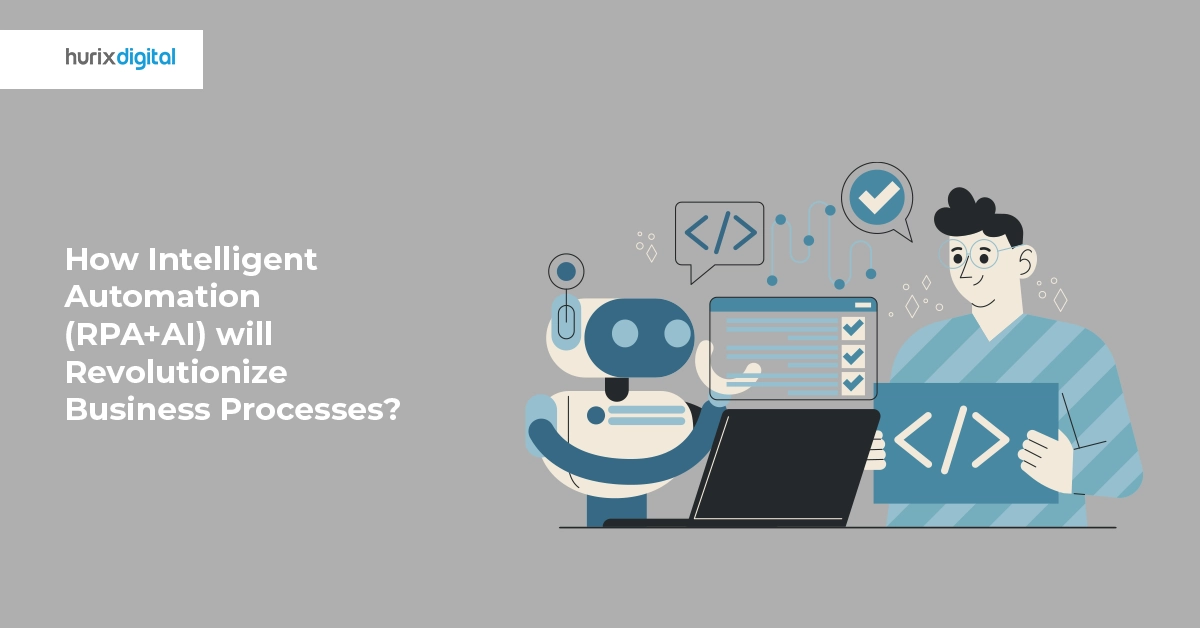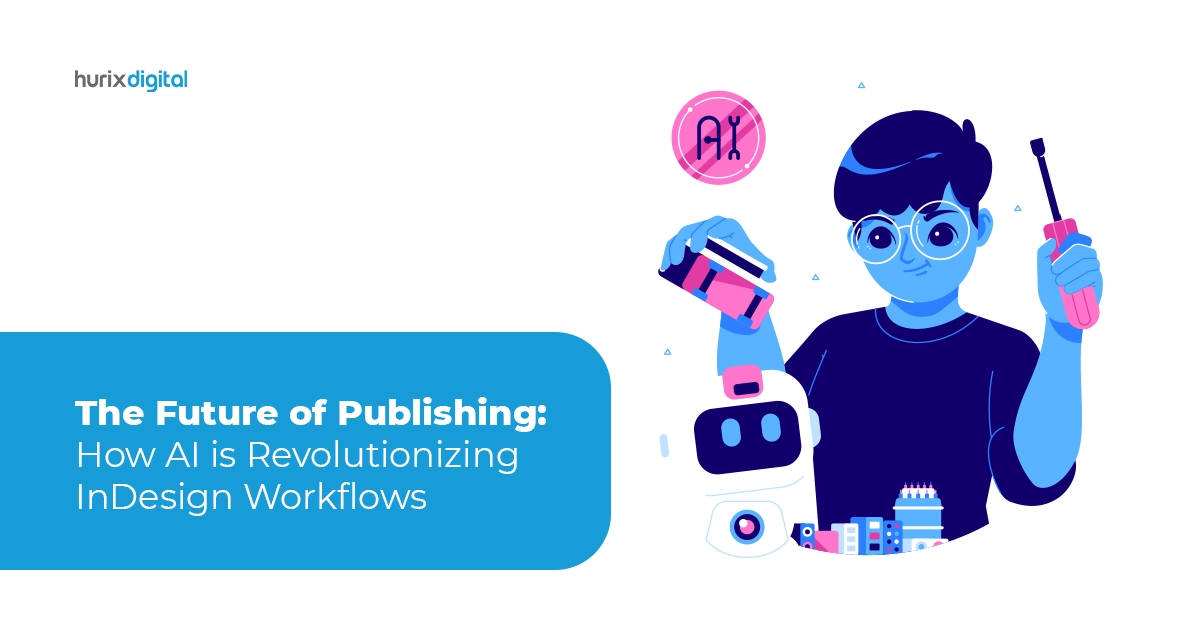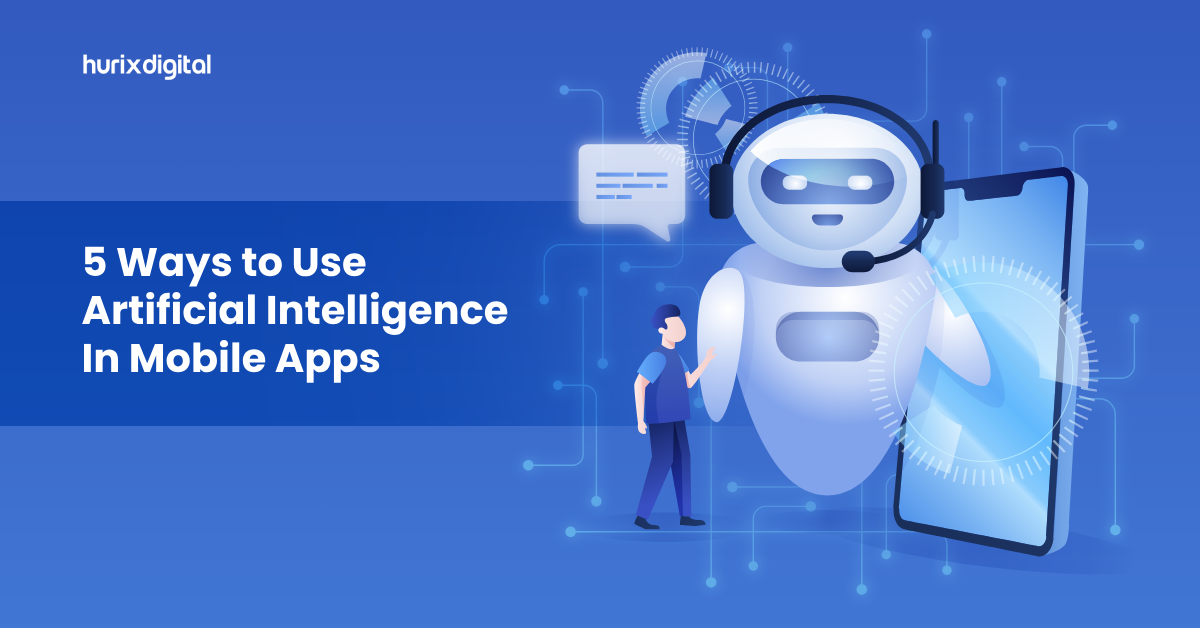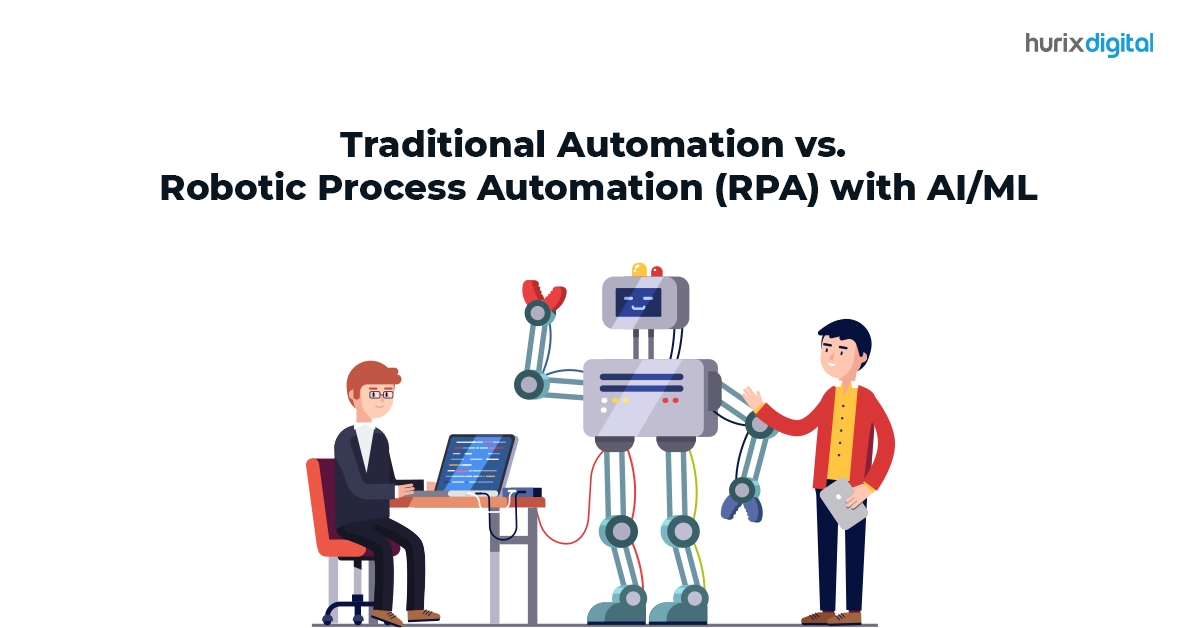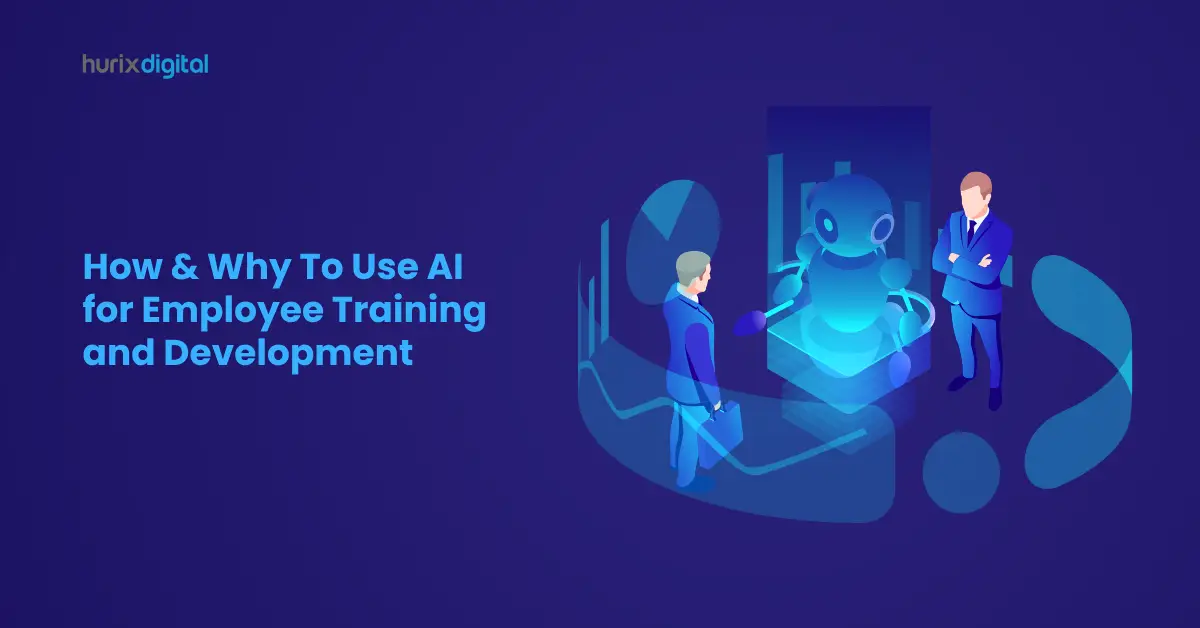In recent years, many organizations have adopted automation technologies across industries to accelerate the growth momentum. Robotic Process Automation (RPA) is the most popular basic automation technology to streamline operations, reduce manual efforts, and save on costs by automating repetitive business processes. Companies are now looking to extend RPA by combining it with Artificial Intelligence (AI) to create end-to-end solutions called Intelligent Automation (IA). Intelligent automation promises to be a revolutionary game changer that can benefit companies aiming for digital transformation.
In this blog, we explore all there is to know about RPA and AI that can greatly help businesses step into the future.
Table of Contents:
- RPA vs AI
- Robotic Process Automation Examples
- What is Intelligent Automation and How Does it Work?
- What are the Common Myths about Intelligent Automation?
- How to Implement Your IA strategy?
- Intelligent Automation Examples
- Conclusion
RPA vs AI
Often people are confused between RPA and AI. While both technologies attempt to make our lives easier, it’s important to understand the fundamental difference between the two. RPA is essentially used to automate tasks of a repetitive nature by installing robots to perform these tasks. These robots are virtual assistants that function and complete tasks as they have been programmed to do. AI behaves like human intelligence by learning and reasoning. AI has advanced capabilities to easily handle complex processes by adapting natural language processing and speech recognition to provide data-driven decision-making outcomes and insights.
Robotic Process Automation Examples
- Data entry
- Data extraction from structured content
- Copy and paste data
- Invoice and order processing
- Opening emails and attachments
- Web Scraping
Robotic Process Automation Tools and their technology expertise employed by Hurix for RPA Initiatives are outlined below
| Technology Expertise of Hurix | Power Automate | UI Path | Automation Anywhere | WorkFusion |
| Dedicated CoE | Yes | Yes | Yes | In the process of establishing CoE |
| Ready to Execute Rapid POC | Yes | Yes | Yes | Yes |
| Development and Maintenence of BOTs | Yes | Yes | Yes | Yes |
| RPA Product Support 24X7 | Yes | Yes | Yes | Yes |
What is Intelligent Automation and How Does it Work?
Intelligent Automation integrates the capabilities of RPA – to automate rule-based and repetitive tasks with capabilities of Artificial Intelligence such as machine learning, natural language processing, and cognitive technology. This combination will enable RPA bots to handle more complex tasks, learn from data patterns, and make intelligent decisions. The automation integration will enhance the ability of bots to understand and interpret unstructured data, handle exceptions, and adapt to changing scenarios.
The intelligent Automation lifecycle comprises three stages:
- Discover and Analyze: In this stage, it is important to understand the business needs and identify opportunities for intelligent automation. Stakeholders provide inputs and suggestions to identify systems/tasks that are repetitive and rule-based as suitable candidates for automation.
- Automate: Once the automation opportunity is identified and approved by the business and higher management within the organization, the scope of the automation is defined and process designs are created. Adaptive and cognitive technology – AI, NLP, and relevant RPA tools such as UiPath, Automation Anywhere, etc. are incorporated for intelligent automation.
- Optimize: Continuous monitoring is critical to ensure the automation is working as expected. Bots are continuously monitored and optimized to meet agreed service levels. Communication and collaboration can be achieved with attended and unattended bots. Providing customer support through channels and feasible tools is important in this phase.
Also Read: The Role of Artificial Intelligence in RPA: Cognitive Automation
What are the Common Myths about Intelligent Automation?
- IA automates 100% of our processes
- IA replaces the human worker
- It is nice to have but not mandatory
- It is only about cost reduction
Let’s dispel the misconceptions by understanding the intelligent automation benefits that it offers:
-
- Enhanced Productivity: Intelligent automation enables the human workforce to leverage the AI capabilities of RPA bots to increase productivity and efficiency.
- Advanced Reports and Analytics: Intelligent automation can provide advanced reports and analytics by combining RPA data with AI insights. It empowers organizations to obtain insights into complete process efficiency and optimization and identify bottlenecks and areas for improvement. It enables organizations to gain greater accuracy in their strategy and planning with real-time analytics.
- Cost Reduction: Intelligent automation will allow organizations to achieve a higher reduction in cost when implemented.
- Eliminate human errors and improve accuracy: By incorporating intelligent automation, precise results from both structured and unstructured data can be generated. Human intervention is reduced, thus eliminating errors and improving accuracy and efficiency in the processes.
How to Implement Your IA strategy?
It is critical to strategize IA implementation to accelerate your organization’s digital transformation.
- Set goals and expectations: Define the value proposition of implementing IA within your organization and how it would be helpful to improve efficiency and ROI.
- Develop Tools Library: As AI continues to evolve, you will find more advancements in automation technology and tools. Therefore, it becomes essential to develop a library of effective tools for IA implementation.
- Take Small Steps: Start with smaller task automation before attempting to automate complex workflows. Prioritize automating those tasks that are time-consuming and need attention.
- Monitor and document results: Keep monitoring continuously to ensure the goals and expectations are achieved. There can be times when the IA implementation doesn’t work as planned. You can document the results and learnings and apply them to avoid the same mistakes in future implementations.
Also Read: RPA Tools and Platforms: A Comprehensive Comparison
Intelligent Automation Examples
IA is gaining popularity across industries like information technology, healthcare, financial services, and manufacturing. We have enlisted below some examples where intelligent automation has been implemented.
- Optical character recognition (OCR): IA employs OCR to analyze data from multiple sources in different formats and automate text analysis.
- Data processing: IA can help extract and process data, images, and emails, which are often unstructured.
- Supply chain management: IA capabilities can be used to anticipate and quickly respond to meet the changes in supply and demand.
- Streamlining HR workflows: Workflow automation of repetitive processes in the human resources department such as onboarding/offboarding of employees, and providing access to tools for new employees can be achieved by incorporating IA.
Conclusion
The future of RPA complemented with AI-powered automation is skyrocketing and limitless. Industry experts believe that intelligent automation will revolutionize workplaces by not only freeing up human workers’ time but also helping them channel this time for more productive outcomes and drive business innovations. Intelligent automation is a necessity for organizations using manual processes to keep up the pace, stay competitive in the market, and improve the quality of customer service.
To bring about an automation revolution within your organization or workplace, please reach out to Hurix Digital, your trusted Automation partner.


